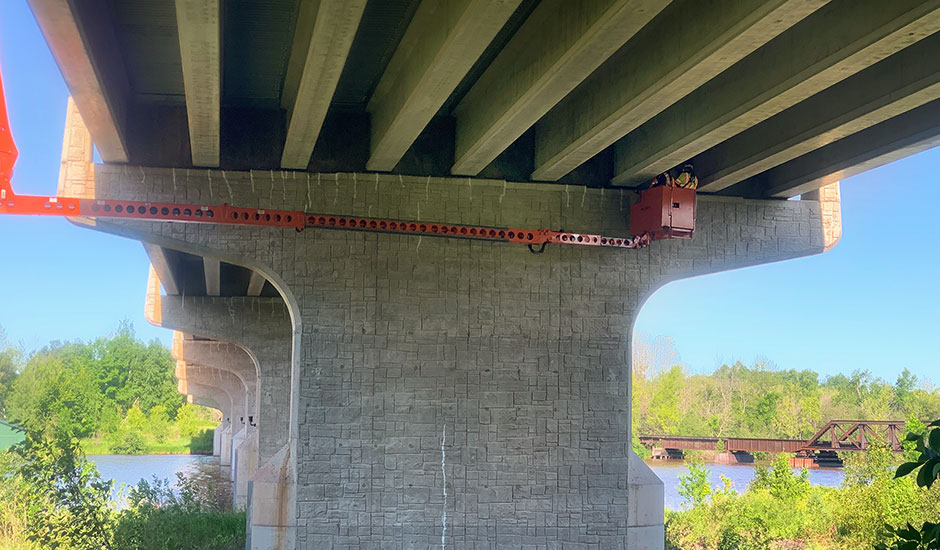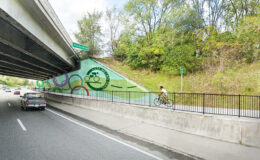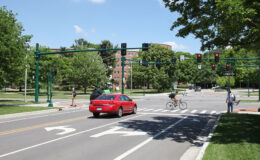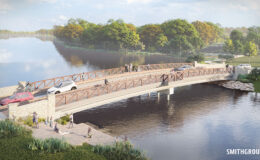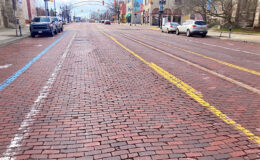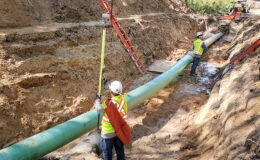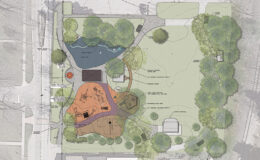The Michigan Department of Transportation’s (MDOT) extensive network of infrastructure includes 54 big bridges that either have a deck area exceeding 100,000 square feet, or are movable, segmented, or unique in their construction. To maximize the investment value and longevity of these bridges over their service life, MDOT focuses on maintaining them in a continuously good condition with emphasis on capital scheduled/preventive maintenance and rehabilitation work instead of replacement. Efforts are supported through routine inspections and an in-depth scoping/condition assessment every 10 years. Scoping is a process used to evaluate bridge conditions, determine any maintenance or rehabilitation needs, and estimate costs. Wade Trim recently completed scoping for two MDOT big bridges: Evergreen Road Bridge over CSX Railroad and I-96 Freeway in Detroit, and M-64/M-38 Bridge spanning the Ontonagon River in the Upper Peninsula.
During a bridge’s service life, deterioration can be attributed to numerous factors including the amount of vehicular traffic, overloading, environmental exposure, normal wear and tear, and collision damage. Scoping for big bridges involves a comprehensive assessment of bridge elements to identify and quantify concrete and steel deficiencies, such as concrete cracking, spalling, and delamination, as well as steel issues like corrosion, pack rust, section loss, cracking, and coating failures. Accommodating the complex magnitude of big bridge elements requires advanced planning and efficient execution.
To complete the detailed inspections safely and minimize traffic impacts, we coordinated with MDOT to accommodate shoulder and lane closures and to secure specific Reach-All inspection dates. The team employed a drone and bucket truck in addition to the Reach-All to access and document all areas of the bridges. Audible (sounding) and visual inspections were completed on all structural components to detect decaying conditions, and geometrics and ADA compliance were assessed. Areas exhibiting concrete and steel deficiencies were noted, marked, and photographed to create a comprehensive catalog of each bridge’s conditions. Steel beams were measured with ultrasonic thickness gauges and results were compared to the original section thicknesses to detect any loss. We also inspected steel beams for fatigue, weld cracks, missing bolts, holes, and pack rust. The Evergreen Road Bridge’s crossing over a railroad required additional coordination with CSX Railroad for a Right-of-Entry Permit and flagging operations to help ensure the team’s safety during scoping.
Wade Trim analyzed the field investigation findings and developed maintenance and repair options with consideration of MDOT’s Bridge Deck Preservation Matrix that guides recommended repair methods for various deck conditions. Preferred alternatives for each bridge were prepared with detailed costs, structural life expectancy, repair effectiveness, regulatory compliance, and sound engineering judgment.
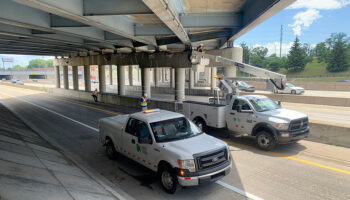
Inspectors use a bucket truck that extends under the bridge deck to inspect the piers and portions of the beams and bearings.
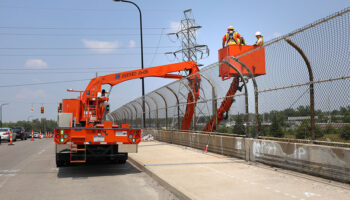
The Reach-All’s articulating arms enable inspectors to move over the side of the bridge and below the deck to view the beams and other elements in areas over water or freeway middle lanes.

